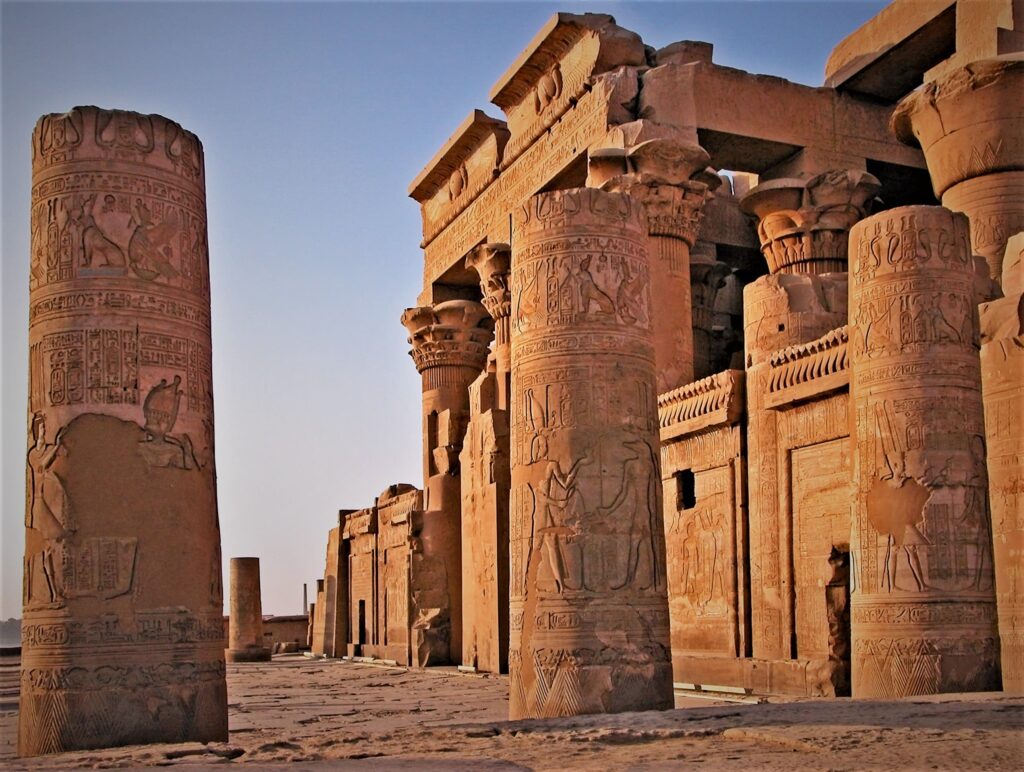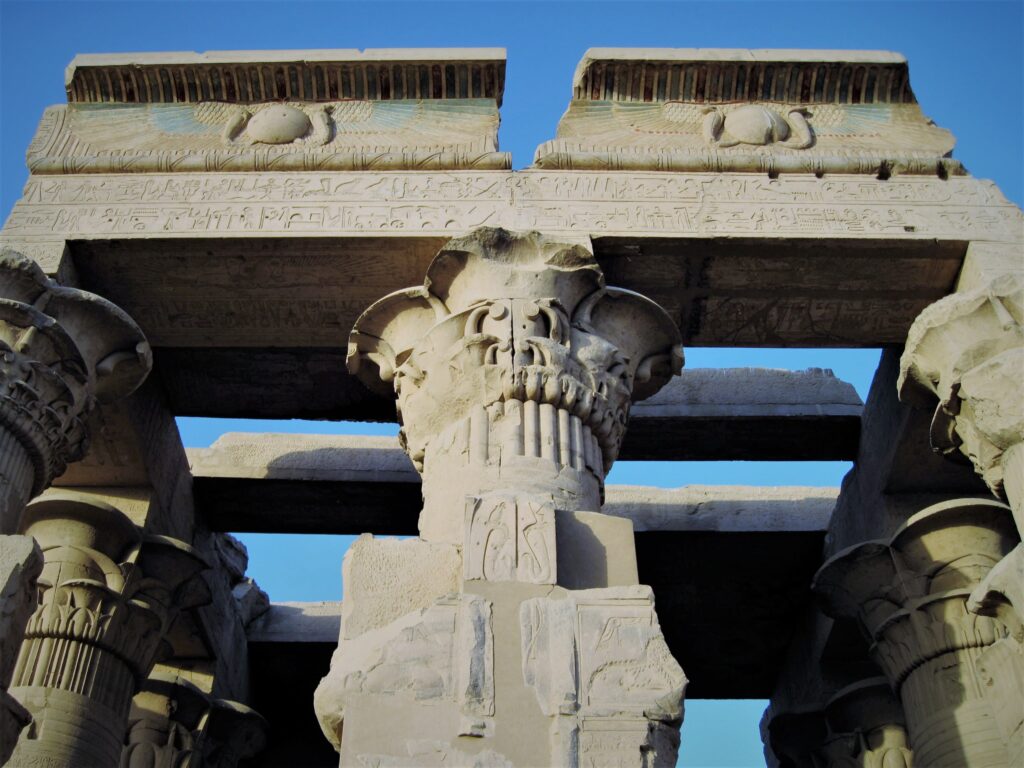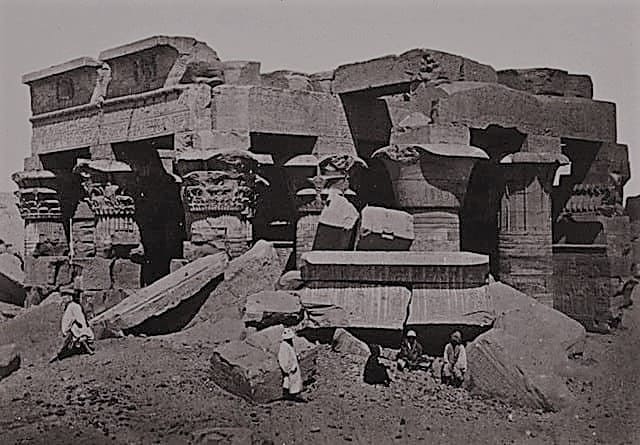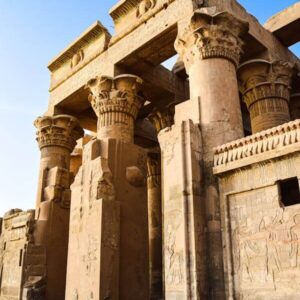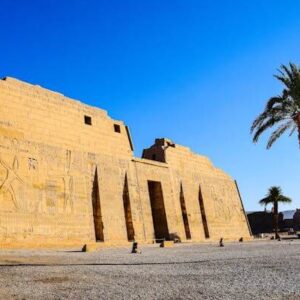
About
The Temple of Kom Ombo is an unusual double temple located in the town of Kom Ombo in Aswan Governorate in Upper Egypt. It was built between 180 and 47 BC during the Ptolemaic Dynasty. C. Some additions were later made during the Roman period.
Architecture
The building is unique in that its «double» design meant that there were double courtyards, halls, sanctums and rooms for two groups of gods. The southern half of the temple was dedicated to the crocodile god Sobek, god of fertility and creator of the world with Hathor and Khonsu. Meanwhile, the northern part of the temple was dedicated to the falcon god Haroeris («Horus the Old»), along with «Tasenetnofret (the good sister, a special form of Hathor or Tefnet/Tefnut) and Panebtawy (Lord of the Dos Tierras).» The temple is atypical because everything is perfectly symmetrical along the main axis.
Decorations
Texts and reliefs in the temple refer to services similar to those of the time. The temple itself had a specific theology. The characters invoked the gods of Kom Ombo and its legend. Two themes were present in this temple: the universalistic theme and the local theme. The two combine to form the theology of this temple.
A temple was built to honor these gods as early as the New Kingdom, but this site grew in importance during the Ptolemaic Kingdom. Few remnants of the New Kingdom Temple survive. The existing temple was built by Ptolemy VI early in his reign. Philometor (180-145 BC) started and supported by other Ptolemies, notably Ptolemy XIII. Theos Philopator (51-47 BC), who built the inner and outer hypostyles. Of particular interest is the scene on the inside of the temple’s back wall, which «probably represents a set of surgical instruments.»
You Can View Our Kom Ombo Tours NowCurrent state
Much of the temple was destroyed by the Nile, earthquakes and later builders who used its stones for other projects. Some of the reliefs inside were defaced by Copts who once used the temple as a church. All the temple buildings in the southern part of the plateau were cleared of rubble and restored in 1893 by Jacques de Morgan.
Crocodile Museum
Some of the three hundred crocodile mummies that have been discovered in the area are on display at the Crocodile Museum. In April 2018, the Egyptian Ministry of Antiquities announced the discovery of the head of the bust of Roman Emperor Marcus Aurelius during works to protect the site from groundwater. In September 2018, the Egyptian Antiquities Ministry announced that a sandstone statue of the Sphinx had been discovered in the temple. The statue, which is approximately 28 cm wide and 38 cm high, probably dates from the Ptolemaic dynasty.

